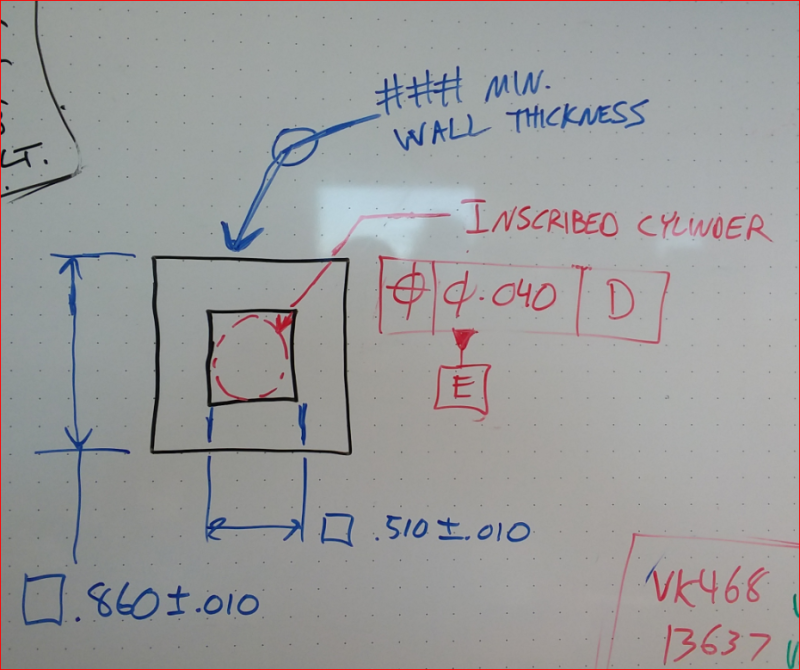I sent a RFQ for a wrench to a Chinese vendor. This vendor has made similar wrenches for us before. We are basically brand new to using GD&T. I know that this vendor has seen GD&T before but I do not know their level of expertise (especially w.r.t. ASME Y14.5-2009).
The vendor's proposed changes are on the attached drawing. Their feedback is in yellow. What I would like to discuss is their replacement of my profile tolerances on the square boss and square hole with position tolerances (as seen in the upper most view). Of course, what I am after is that both square features are oriented to each other to maintain a nominally uniform wall thickness between the boss and the hole and that both square features are centered on the part.
While I believe that the proposed position tolerances still achieve this I am wondering if the interpretation of what datum feature "E" is has changed. With the original profile tolerance datum feature "E" is the square hole. Does using the 2X Ø.510 as datum feature "E" achieve the same thing? Does anyone read that datum feature "E" is only one set of opposed surfaces and not both sets of opposed surfaces?
I am thinking that I will add a note to the datum feature symbol stating that datum feature "E" is the square hole just to be safe.
The vendor's proposed changes are on the attached drawing. Their feedback is in yellow. What I would like to discuss is their replacement of my profile tolerances on the square boss and square hole with position tolerances (as seen in the upper most view). Of course, what I am after is that both square features are oriented to each other to maintain a nominally uniform wall thickness between the boss and the hole and that both square features are centered on the part.
While I believe that the proposed position tolerances still achieve this I am wondering if the interpretation of what datum feature "E" is has changed. With the original profile tolerance datum feature "E" is the square hole. Does using the 2X Ø.510 as datum feature "E" achieve the same thing? Does anyone read that datum feature "E" is only one set of opposed surfaces and not both sets of opposed surfaces?
I am thinking that I will add a note to the datum feature symbol stating that datum feature "E" is the square hole just to be safe.

